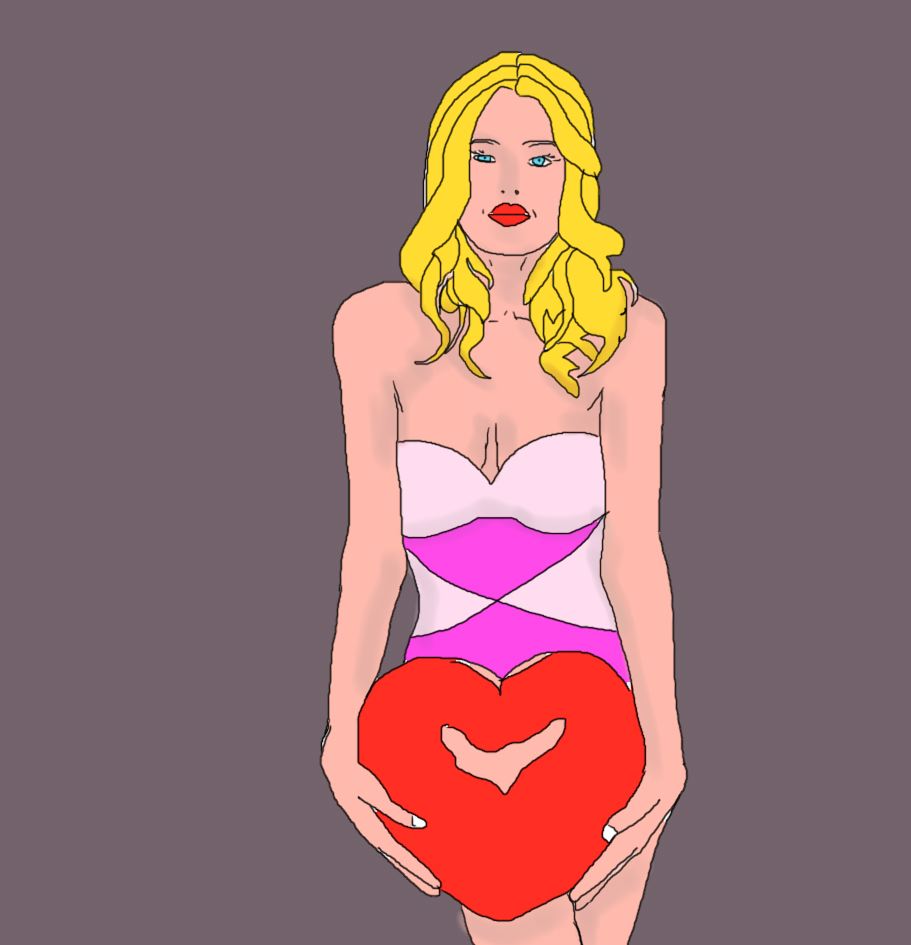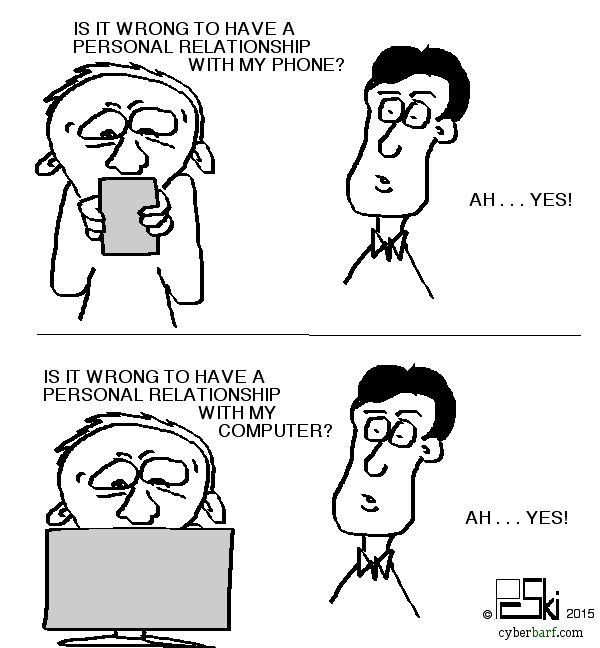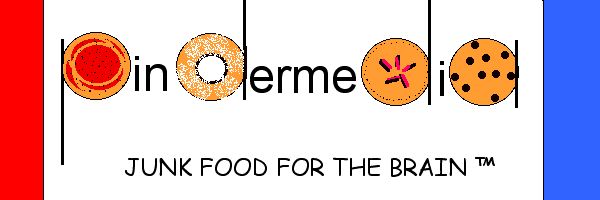|
RELATIONSHIPS
|
cyberbarf VOLUME 14 NO. 7 EXAMINE THE NET WAY OF LIFE FEBRUARY, 2015
THE SCIENCE OF US WHETHER REPORT THE RISE OF SPEED DATING iTOONS LIFE IS HARD FUN NEW REAL NEWS KOMIX! SHOW HACK!
|
|
LADIES JAMS MULTIPLE STYLES-COLORS $31.99 NICE HOLIDAY GIFT
PRICES TO SUBJECT TO CHANGE PLEASE REVIEW E-STORE SITE FOR CURRENT SALES
|
WELCOME TO THE SITE SPECIAL!
©2015 Ski All Rights Reserved Worldwide Distributed by pindermedia.com, inc.
|
|
cyberbarf THE WHETHER REPORT |
cyberbarf STATUS |
| Question: Whether the Apple watch will be a fashion dud? |
* Educated Guess * Possible * Probable * Beyond a Reasonable Doubt * Doubtful * Vapor Dream |
| Question: Whether the new global central bank currency wars will adversely affect technology companies? |
* Educated Guess * Possible * Probable * Beyond a Reasonable Doubt * Doubtful * Vapor Dream |
| Question: Whether the success of The Interview streaming video sales will move studios towards that distribution channel for their secondary or art movies? |
* Educated Guess * Possible * Probable * Beyond a Reasonable Doubt * Doubtful * Vapor Dream |
|
The staff has been kinda obsessed with Relationships since Ski's cartoon from last month's edition. In the normal course, we tend to overanalyze the subject and understate the obvious. So we wind up with sort of, kind of, theme edition. The history of attraction, rituals, ethics, with the connection to today's modern technology are explored to try to present a cyberculture take on our collectively, at times, baffling subject matter called Relationships. |
NEW TO THE STORE CHECK OUT ALL THE STYLES!
THANK YOU FOR YOUR SUPPORT!
CYBERBARF
|
|
cyberbarf EXAMINE THE NET WAY OF LIFE |
"The best proof of love is trust." - - -Joyce Brothers. |
|
cyberbarf EXAMINE THE NET WAY OF LIFE cyberbarf THE SCIENCE OF US ARTICLE Is it biological, societal, cultural, emotional or soul searching? Involuntary, voluntary, conformity, subconscious or transformational? What is Love? Depending on where you fall in the age-old ardent geek-nerd to hopeless romantic, love could be one of two things: it is either a series of electrochemical processes taking place within the brain, or it's the single most important spiritual experience we mere mortals can possibly encounter. For as long as humans have been able to express their feelings, love has been considered a sacred, instinctual human experience. In Greek mythology, Eros, the god of romantic and sexual love, was responsible for getting earth (Gaia) and sky (Uranus) to hook up, and it was this love connection that gave rise to many of the other gods that followed in their path. When the Romans adopted the Greek pantheon of gods, Eros became Cupid, a common modern symbol of a little boy with wings and a quiver of arrows at the ready to inspire love in the hearts and minds of people. Science and social research have studied the topic as both a concept and as a brain function to examine of how love and romance works in relationships. One field of study has applied itself into the investigation of whether what we call love at first sight can exist. In an Ohio State University study, scientists found that people can tell in the first minute or two whether they're interested in a relationship with another person. What's more, after nine weeks, they found that the initial ideas of the potential relationship served as a fairly accurate predictor for how the actual relationship turned out. But love at first sight is shallow; it is based on superficial factors like physical attractiveness or personality traits. The research suggests two things: that love at first sight can serve as an impetus towards a long-term love, and that our own early opinions about how we could feel about another person can prompt us to try harder to have a relationship with that person. Besides the initial visual cues of attraction, what else is happening? Besides mental traits which may be influenced by cultural factors, biochemistry has a role to play. ABC News did a feature story on whether chemistry between new people is actually based in chemical signals. It sent pairs of twins out on speed dates to test whether pheromones (scent molecules humans emit that are believed to attract other humans) might play a role in attraction. Twins were given a fragrance to wear, one with added pheromones, and one without. It was a blind test, so neither twin knew who had been doused in pheromones. The results were positive in favor of the molecules' effectiveness. One female who wore pheromones had nine out of 10 guys say they wanted to see her again. Her identical twin attracted only five of the same men. Not necessarily conclusive, but the test showed that the chemical addition added increased the connection between the subjects by 44 percent. Since even a strong biochemical initial attraction can get one's attention, it does not show that people are immediately love drunk and pawing each other on the ground within minutes of meeting. Humans are complex and unpredictable beings, with their brains being the most complex and mysterious system on the planet. The peacock is on display. Once there is an initial connection, the factors people call romance between to take root. There is a body of evidence that it is almost universal that there is an element of display to entice attraction. Human beings call it flirting. In the animal kingdom it is called displays, like when male peacocks spread their colorful feathers in a dance to attract a female. When we flirt, we are sending the message that we are interested in knowing someone better, but science wants to know why this ritualistic step is necessary. Psychology Today published articles that said to scientists, it all came down to our inherent human desire to reproduce. When we flirt, we're giving off information about how fit we are to procreate as well as our health. There are also specific aspects of our appearance that make us more attractive to others. Natural selectionists in nature try to equate the animal patterns in the wild to human behavior. Some of the female signs of flirting, such as angling her body and sticking out her hips, are attempts to draw attention to her pelvis and its suitability for carrying a child. In addition, men tend to be more attracted to women with a certain hip-to-waist ratio (specifically, the waist must be no more than 60 to 80 percent of the hip circumference) . Naturalists suggest this formula is an instinctive indication of fertility. When a man makes intense eye contact and smiles often, he attempts to show that he is both virile and dependable. Women are attracted to prominent, square jaws, which are indicative of a man's power and strength. Scientists point out that features like square jaws in human males have a connection to prominent features in the animal kingdom equate to being a strong individual. Except that all reproduction reasoning fails to take into account older couples dating and finding love outside having a family. There has to be other cultural factors at work. Physical features may be accented or magnified by cultural accessories like expensive cars men drive; women who wear push up bras and short skirts; the type of jewelry or apparel extend a signal of wealth, taste, individuality and style. When we are flirting with someone who fits the bill for us, the limbic system takes over (the same system responsible for our flight-or-fight response). We operate on emotion and instinct. If we only governed flirting with the most rational part of our brains, we might not ever flirt -- or get a date -- at all. In fact, according to biologists, there's a connection between brain damage and flirting. The study concluded that people with damage to the connection between their limbic structures and the higher brain are smart and rational -- but unable to make decisions. The saving mechanism is our ability to carry a conversation and engage in the joking back-and-forth of flirting which indicates our intelligence, which is always attractive. But many cultures have different attitudes towards initial impressions - - - some Europeans find American males too forward, while American women find some Europeans too reserved. Other cultures have extremes - - - like not seeing one’s life partner until the wedding (arranged marriages). Other cultural pressures, like in Asia, societal pressure is that a woman must marry before the age of 30 or she is considered unattractive or too old to be an acceptable marriage partner. Many of these customs are embedded in centuries of local or regional cultural norms. For example, it was a major error for a gentlemen to introduce himself to a single woman. The introduction needed to be made through a neutral acquaintance in avoid any scandalous inference. The Encyclopedia Britannica notes that there was 1881 book advising young Victorian men and women on manners and etiquette includes several guidelines for courtship. First and foremost, a gentleman should not be introduced to a lady, unless her permission has been previously obtained. Once he is introduced, he has the freedom to call on her and accompany her to concerts, operas, balls, etc. However, a gentleman who does not contemplate matrimony should not pay too exclusive attention to any one lady. This protocol is part of the societal norm of honor and class structure preservation. Status, as in today’s culture, was very important in Victorian times. A proper Victorian woman will not too eagerly receive the attentions of a gentleman, no matter how much she admires him; nor, on the other hand, will she be so reserved as to altogether discourage him. This is probably the root of modern dating advice contradictions (The Rules) which confuse both men and women on how to navigate their initial feelings and conduct between themselves. The 1881 dating manual goes on to describe how men should only take the hand of a woman when she offers it, and that the kiss the most affectionate form of salutation, and is only proper among near relations and dear friends. Overt signs of interest were generally considered unacceptable on the part of both men and women. However, Victorian women could still show interest in men through very subtle cues. One way was through floriography, or the language of flowers. Different flowers represented different feelings, and they could be very complicated. Dictionaries were published so that everyone could easily understand the meanings. Though modern romance does not have coded flowers as secret messages of intention, the concept of giving flowers to a lady is a time honored tradition. Because of modern communications, the in-person form of communication is no longer the only means to express oneself. The old rules that our parents used never contemplated the internet, text messages, tweets and social media posts. So even today, conflicting rules of Modern dating are trapped in generation notions of courtship, different forms of communication and cultural distractions. To complicate matters further context and innocent construction can be difficult to comprehend. At its most basic, flirting is simply another way that two people can closely interact with each other. But when you get into the intention behind flirting and exactly what flirting entails, things get much more complicated. It doesn't have to be romantic or sexual -- sometimes, it's just friendly banter without any other intentions. Sometimes one person has romantic intentions and the other one only has sexual ones, or doesn't even realize that he's being flirted with. Misunderstanding the signals can lead to some uncomfortable and embarrassing situations. The most important aspect of flirting is the intention behind it. Sometimes the words used are very innocent, but the speaker's delivery, expression or mannerisms make them appear flirtatious. It can be difficult to know when someone is flirting with you or who might be receptive to your flirting. To compound the issue, sociologists believe there are also some differences between how women and men flirt. For example, some women bat their eyelashes or run their fingers through their hair. Men are more likely to make bold, aggressive gestures, like intense eye contact. In addition, they are more likely to flirt out of sexual interest, while women often flirt to test men's intentions, using ambiguous gestures. The Social Institute Research Centre in the United Kingdom has coined a term, protean signals, for these ambiguous flirting gestures. It named for the Greek shape-shifting god Proteus. If a woman uses these gestures and learns that the man is not interested, then she can always play them off as not being flirtatious. This is a social safety net to avoid awkward or embarrassing situations because no one really wants to hurt another person's feelings since flirting is just as complex and tricky as dating in general. All of these initial hurdles are part of the pair bonding experience. Every species, every couple have their own dynamic, timing, responses and mental-emotional bonding patterns. Science has concluded that the pair bonding function between males and females was an important evolutionary step to maintain safety, security, resources and increase the odds of passing on genes to the next generation. Anthropologists believe the fact that human infants are much more helpless than other primate babies and require constant care for a relatively long period of time, humans had to form kinship groups where a division of labor could occur, with the men doing the hunting and the women staying behind to gather plant foods and care for the children. Pair-bonding within groups may have been established among the early hominids when the females became sexually receptive at all times, unlike other primate females who have an estrus cycle. Members of a group who perform different economic tasks during the day must operate within a limited territory and have a place where the entire group reassembles to distribute the food and spend the night. The concept of a home base has been confirmed in the archaeological record as the basis of long term societal relationships (the family unit) which would become the keystone of any civilization. Whether this behavior is hard wired into the human brain (like instincts and reactions to dangerous, fearful situations, which at times mirrors some of the nervous emotions in dating) or learned memory cues is unknown since human relationships, growth and personality do not occur in a vacuum. Besides, there is a higher brain activity involved when dealing with relationships. The emotional roller coaster creates neuro-impulses which try to apply stored memories, experience, cultural norms in light speed reactions to dating inputs while at the same time, individuals have involuntary reactions to inputs such as spontaneous laughter to goosebumps. The bottom line is that good relationships are healthy endorphin and brain oxytocin pleasurable experiences that make people happy. And happiness seems to be a scarce commodity in the modern hectic lifestyle of most people.
cyberbarf THE RISE OF SPEED DATING SHORTCUTS Speed dating works on the mathematical assumption that more contacts will increase the odds of finding an attractive, compatible person. Since speed dating is based on a series of brief encounters with a number of people, the basis is actually just a parade of chances to get an initial feel for another person and decide whether or not he or she is worth your time. The goal is not to meet another person to go out on another speed date. Instead, the goal is to meet someone with whom you would like to go out on a traditional date. In this sense, speed dating serves as a kick-start to regular dating rather than as a replacement for it. Speed dating took on epic cultural significance in the early 2000s The concept was introduced to the American dating scene by Rabbi Yaacov Deyo and his wife, Sue, who founded their own service, SpeedDating. The service is based on an old Jewish tradition: helping young, single Jews meet others in the faith. This tradition of creating a shidduch, or a match, called for Jewish singles to be kept in the dark about each other until the time for matchmaking came. Matchmaking has had long traditions in various cultures as an acceptable social, political or economic means of marriage between young adults. At times, the bride and groom do not meet until their wedding day, while other services have evolved into secular match services where a company tries to compare client questionnaire answers and arrange normal dates for them. These services compile the data from brief encounters between daters and then inform each attendee of the results, allowing interested parties that scored a match to pursue another meeting with each other. SpeedDating and its offshoots have captured the imagination of popular culture, fitting nicely into the fast-paced environment of 21st-century America. In 2000, the dating technique reached craze status, spreading quickly to rest of the Western world, taking strong presence in England, Australia and China. Although its overall popularity in the United States may have waned in recent years, it has become an established and accepted form of dating, with speed-dating events held in cities throughout the U.S. Many of those who would use such a technique have moved on to the structured of on-line dating services like eHarmony and Match.com that use data base filtering to send possible connections to clients. Speed dating events are most often held in restaurants and bars, although events are cropping up in other places, like student unions on college campuses. Participants are asked to register ahead of time to ensure an even ratio between men and women attendees although some services now offer registration at the door. Events cost approximately $30 to $40 per person. Inside the venue, speed daters will find that tables are arranged to accommodate two participants at a time. One set of the speed daters, usually women, stay seated at the same table, and the opposite group moves from table to table. This table-hopping method has been compared to musical chairs. The difference is, when the bell rings or buzzer sounds, the next seat the dater takes is predetermined. The speed dater progresses from table to table until each participant has had a chance to meet the other. Depending on the company, a speed date may last from three to eight minutes, although some go as long as 10 minutes. At the end of the date, each dater makes a note if he or she would like to see the other person again. After that, the speed daters move on to the next table, and a new date begins. The number of dates held in an evening can vary, but most services hold 10 or less. Since it is a formalized and supervised event (rather than open bar scene which creeps out many people), the idea of meeting seven to ten new people who have the same inhibitions, dating issues or goals gets one past the initial barrier to establishing a new relationship. As another level of comfort zone, some firms have now incorporated themes into these gatherings. Like minded people have something immediately in common as an ice-breaker, so the theory goes, there is more opportunity for successful matches. (Really, this almost goes back to small town Saturday square dances where people from the surrounding area would come together for a common event.) Besides specialized speed-dating events tailored to religious affiliation, others are designed for people who share a love an interest, from Broadway plays and musicals, technology junkies, single parents and hobbyists. By hosting events for people who already share at least one thing in common, organizers can assure a better chance for a match. There is no conclusive evidence that speed dating, on-line match sites or traditional introductions through friends or colleagues has any better success rate than any other method. Studies like the one at Ohio State University suggest that speed dating should, in theory, work. If we can determine whether another person is a good match for us in just a minute or two, then speed dating is an optimal approach to selecting a mate. Why waste time on some jerk when you've already decided that you will most likely never speak to him again? Speed dating also offers a structure that -- in its brevity -- encourages polite behavior and a built in factor of easy rejection (soft landing if there is no immediate connection and investment in a person). And with the speed-dating service ringing a buzzer that signals the end of a couples' time together, participants can relax knowing that they can largely avoid any awkward end-of-date moments. But do the rules of attraction still apply in speed dating? University of Pennsylvania psychologists examined more than 10,000 client responses from a speed date data base and found that in the context of a speed date, the usual rules of attraction go out the window. Factors like religious affiliation and earning potential -- usually viewed as very important in dating -- are replaced by behavioral cues. These cues provide the basis of attraction in a setting where time is of the essence and split-second decisions are made. Another study conducted by Stanford Business, Harvard and Columbia University researchers also found that women in the speed date setting throw out traditional requisites for a mate, like intelligence and sincerity, and go instead for physical attractiveness. So, too, do men, but this represents no change, as men traditionally report physical attractiveness at the top of their list of desirable qualities in a mate. This same study also found that the smaller the pool of potential candidates, the more likely women were to want to see any of the given men. As the number of men at the speed date simulation increased, the number of men the women wanted to see decreased. Scientific study has come up with quantitative evidence that speed dating can work in the selection of a mate. But there's also plenty of qualitative evidence suggesting that speed dating can fail. Some speed daters report the scene is fraught with sleazy and insincere individuals. Others find the candidates somewhat lacking. “I've never seen so much desperation in one area,” reported one college student who tried speed dating at an event at the University of Buffalo. The origins of Facebook is rooted in the fact that college men wanted a quick, simple and different way to meet college girls without the personal rejection of the normal hit-and-miss dating scene. By posting personal messages on the FB site, people can learn about someone (usually through their existing friends) so one can like another person to the point of messaging them to ask for a traditional date. Facebook's entire system and its foundation is based upon relationships. PRICES TO SUBJECT TO CHANGE PLEASE REVIEW E-STORE SITE FOR CURRENT SALES
|
|
THE PINDERMEDIA STORE IS FULL OF FUN T-SHIRTS CLOTHES, HATS AND OTHER ITEMS. CHECK OUT THE STORE FOR ITEMS
SUPPORT cyberbarf VISIT THE CYBERBARF STORE! Prices and styles may vary depending on sales, allotments, inventory. |
|
cyberbarf.com EXAMINE THE NET WAY OF LIFE iToons
cyberbarf LIFE IS HARD FUN ESSAY If you have gotten this far down the page without stacking furniture against your apartment door or lying in the fetal position on your living room carpet, good. You are a survivor. And a draftee. And a pawn. And a nice person who questions the world around you. Life is hard journey of experiences, both good and bad. It is how we deal with those experiences that ultimately makes Life open a path to happiness, fun and lasting relationships.
Every person has the battle scars of past failures. As in business, one can learn more from failures than moderate successes. It is not necessarily to find out what you did wrong, but how you handled your own expectations and execution of your feelings. Many have gotten caught by rushing a relationship while others got burned by going too slow to lock down a commitment. In all the research, studies, personal observations, experience and cultural tropes, there is no right or wrong answer in developing, cultivating and bonding a special relationship between two people. If it was easy, we would have bottles of instant love potions for sale at the check out counter of every pharmacy in America. Big pharma would love that idea until they realize that people in relationships lead more healthy and fulfilling lives than singles. People with lower self-esteem tend to gravitate toward messaged solutions such as dating services, diets, self-help books, gym memberships - - - things that cost money without guarantees unless that person is introspective enough to find out what is holding him or her back. Some people discount resolutions, but a person without a plan is like a person driving down the highway of life on with a flat tire; it can get you to a destination slower and bumpier road. We are taught from childhood that organization is a key element of success, so just like at work there is an organized work flow, people tend to forget that they should organize their personal life. There is research on break-ups which shed light on relationships. Why does it hurt when you are rejected? Metacognition is “thinking about thinking.” When you sit and ask yourself, “Why am I thinking this? Why do I feel this way? ” you are thinking metacognitively. Wikipedia defines metacognition as the study of memory-monitoring and self-regulation, meta-reasoning, consciousness/awareness and auto-consciousness/self-awareness. In practice these capacities are used to regulate your own cognition, to maximize your potential to think, learn and to the evaluation of proper ethical/moral rules. In other words, when you employ metacognition, you're becoming self-aware. When you turn the magnifying glass inward while your are feeling rejected, you can notice fairly quickly why rejection stings: it's because you feel like the other person is saying “you are not wanted.” Someone seems to be rejecting you. You have been deemed “not good enough.” And that cuts to the very core of our egos and self-esteem. However, some relationship breakdowns show that the other person ended up feeling, by your own mistakes and actions, as if she or he “wasn't good enough for me... as if he or she thinks they are just good but you could do better.” If you think she rejects you because of you, you may not realize he or she may reject you because they believe you believe they are not worthy is a soul-wrenching feeling; to feel that someone -- especially someone who knows them well -- has been rejected as unworthy at a very primal level. This counterintuitive paradox is why relationships are hard to start, foster and maintain until the couple gets over the self-doubt, assumptions, second guessing and worry. The idea of rejection feeds regret. But men and women handle regret, like many emotional issues, differently. Regret for for women usually begins from a point of how a missed opportunity could have better benefited themselves. Women's experience of regret depends upon the degree or intensity of the encounter in relation to their own conditions. If, and to what degree, a woman experiences regret in the situations are directly proportional to her self-worth versus the (perceived) value of the encounter. Men tend to lament a missed chance at something they hoped might develop. There’s no guilt involved in this wishful thinking, only a regret for not having taken an action. For the first time in United States history, single people are the majority in households. As a general rule, human beings are sociable. We begin our journey in a family unit. We learn lessons in groups at school. We normally function as part of team in business-work. A society's barometer of self-worth can be measured by a person's family, friends, colleagues and partner. A civilization is dependent upon men and women forming strong pair bonds in order pass along the instilled values of the culture and to move a nation's economic standards forward. As a result there are various outside factors that weigh heavily on the psyche of people who may have will themselves through stages of introversion to become a non-wallflower. The world is often judgmental. Most people think we are pigeon holed into two basic categories: introvert and extrovert. Introverts are considered to be flawed individuals based upon the ideal that extroverts are perceived to be better leaders and dynamic individuals. But social researchers have come to the conclusion that this two-part generalization is flawed. There are actually 16 types of introvert-extroversion on a personality spectrum. The purpose of the Myers-Briggs Type Indicator® personality inventory is to make the theory of psychological types described by C. G. Jung understandable and useful in people's lives. The essence of the theory is that much seemingly random variation in the behavior is actually quite orderly and consistent, being due to basic differences in the ways individuals prefer to use their perception and judgment. Perception involves all the ways of becoming aware of things, people, happenings, or ideas. Judgment involves all the ways of coming to conclusions about what has been perceived. If people differ systematically in what they perceive and in how they reach conclusions, then it is only reasonable for them to differ correspondingly in their interests, reactions, values, motivations, and skills. The MBTI takes four tenets (favorite world, information, decisions and structure) and two choices to create a personality grid pattern. Favorite world: Do you prefer to focus on the outer world or on your own inner world? This is called Extraversion (E) or Introversion (I). Information: Do you prefer to focus on the basic information you take in or do you prefer to interpret and add meaning? This is called Sensing (S) or Intuition (N). Decisions: When making decisions, do you prefer to first look at logic and consistency or first look at the people and special circumstances? This is called Thinking (T) or Feeling (F). Structure: In dealing with the outside world, do you prefer to get things decided or do you prefer to stay open to new information and options? This is called Judging (J) or Perceiving (P). The proponents of this indicator test say that no one profile is the best; all are equal. It gives one a starting point for self-examination. This may be a reasonable way to try figure out who you are in an introspective analysis, but it may not actually help perceive what personality your date is because dating is filled with masks, layers, nervous tension and hidden intentions. And a person is not absolute in any choice in each tenet. For example, here are two personality types that have only a world focus difference: INTP: Introversion, Intuition, Thinking, Perceiving personality: Seek to develop logical explanations for everything that interests them. Theoretical and abstract, interested more in ideas than in social interaction. Quiet, contained, flexible, and adaptable. Have unusual ability to focus in depth to solve problems in their area of interest. Skeptical, sometimes critical, always analytical. ENTP: Extraversion, Intuition, Thinking, Perceiving personality: Quick, ingenious, stimulating, alert, and outspoken. Resourceful in solving new and challenging problems. Adept at generating conceptual possibilities and then analyzing them strategically. Good at reading other people. Bored by routine, will seldom do the same thing the same way, apt to turn to one new interest after another. But there are possibilities beyond pure introversion or extraversion. Many of us know about the introverted, shy film actor or comedian who is dynamite on stage, but afterward terms into a hermit crab with a social shell thicker than an atomic bunker. It is hard thing to deal with other people who expect these shy extroverts to “to be on” all the time (funny, engaging, interesting, life of the party, etc.) Then there is a category that I was unaware: the outgoing introvert, which seems to be irrational psycho-babble. It has been shown that an outgoing introvert is not adverse to social situations. In fact, this group warms up in social settings (at times slowly) and functions well around other people. It is afterward, these people feel emotionally drained and withdraw to literally “recharge” their energy levels. They need their alone time to build up the confidence energy levels to become outgoing in the next social situation. It seems to make sense, since extroverts tend to get energized in social situations by drawing acknowledgment and vibes from their audience (especially from engaging with introverts). Introverts tend to try to conserve their social capital so they tend to seem quiet, reserved. They take the conservative route: come late, leave early and have a middle of the road attitude during the event. The outgoing introvert has enough social capital and skills to be the center of attention, carry on interest throughout the evening, but then afterward crash to a base level of introverted isolation. So this adds more layers of difficulty on how to read people in social situations, and becomes even more urgent and important when one is trying to date these various personality types. An outgoing introvert may not want to deal with text or phone calls for days after a social situation, which a person could misread as disinterest, dissatisfaction with the person, anger or some other emotional state that adversely impacts on the relationship. But that was never the intention of the outgoing introvert - - - it is just the nature of their being. Sociologists state that despite the differences in the personality types, any two types can manage a successful relationship if each partner actually understands why some times someone is up then down. As with most relationship issues, communication skills are important. However, the irony is that it is difficult at times to communicate serious matters because of the nervous fear that one will say something awkward, wrong or offend your date so as to stupidly ruin the relationship. Trust is the glue that binds and allows a couple the safety net to speak freely without losing perspective of the goal of finding happiness together. But there are other social studies that add a monkey wrench in logic with some odd common sense. According to a study conducted at the University At Buffalo, the behavior and satisfaction of 600 couples was studied for a decade. The study came to the conclusion that couples with similar vices (alcohol and cigarettes in this case) and levels of engagement in said vices are likely to be more content with their relationship. And the correlation was greater for alcohol consumption than tobacco use (social lubricant.). Essentially, heavy drinkers are more likely to be happy in their marriage than a drinker married to a teetotaler. Similar habits tend to be another element that binds people together. If one is trying to mirror their own self-esteem or value on their partner, then this study finds such a correlation. There seems to be many different avenues of study, from personality traits to social behavior, in how relationships develop and work. Even when a couple have been together (dating or serious relationship), sometimes one or the other cannot fully gauge their partner's true feelings. The mystery of the chase, as turn of the century dating guides said, and the mystery that is part of the chase, tend to add bits of confusion and doubt even in the most compatible relationships. The web is filled with love and advice materials which echo scientific studies to trolling commentary about dating behavior cues. If you want to boil down the core principle to a relationship, we have found that if a couple is good together, they should be together. You can tell if you have built a trustworthy, sound and loving relationship if you and your significant other have started to cross these various milestones: told secrets to each other; seen each other in moment of weakness, respect each other; talk and meet each other's families and friends; imagine a future together; can disagree; can work out their differences; laugh together; have a longing attraction; comfortable and okay to be quiet around each other; you feel like yourself around them (no pretensions, or self-editing your thoughts or actions); you need him or her around the right amount (so as not being needy); don't feel jealous about their work, activities or friends; you understand each other; and your partner makes you feel like a better person. The one factor that is downplayed in most of the studies is the need for people to be open, honest and communicate their feelings to their partner. It seems miscommunication or the lack thereof stirs negative thoughts about yourself (did I do something wrong) or your partner when there really is no problem, just an insignificant misunderstanding. But people guard their psyche because they don't want to be hurt or hurt another person they care about. That is the paradox of being human. Life is hard. If it was Easy, it would not be Fun. |
|
BACK IN BLACK WITH THIS CLASSIC CYBERBARF T-SHIRT!
FEATURING: THE REAL NEWS IMPACT EDITORIAL CARTOONS WRIGLEYVILLE WAR POLITICS ENDORPHIN RUSH THE DARK ABYSS RANDOM ELECTRONS SPECIALS
FEATURING: THE REAL NEWS ARCHIVES CARTOONS MADAME'S TEA HOUSE THE BAR EXPLORE THE CITY SCAPE UNDER CONSTRUCTION SURPRISES ESTORE SPECIALS |
NEW THEORIES AND CHARACTER ESSAYS INCLUDING 10 YEAR ANNIVERSARY ARTICLES
cyberbarf
THE STEAM PUNK SPECIAL EDITION featured new Music from Chicago Ski & the (audio) Real News: (mp3/4:14 length)
EXAMINING THE NET WAY OF LIFE cyberbarf™ distributed by pindermedia.com, inc.
|
cyberbarf
Distribution ©2001-2014 pindermedia.com, inc.
All Ski graphics, designs, cartoons and images copyrighted.
All Rights Reserved Worldwide.





















